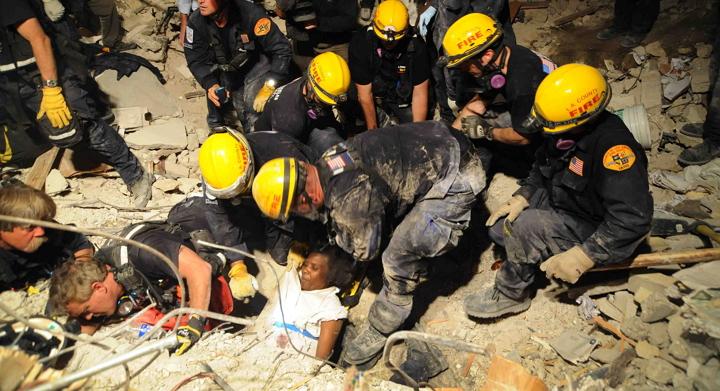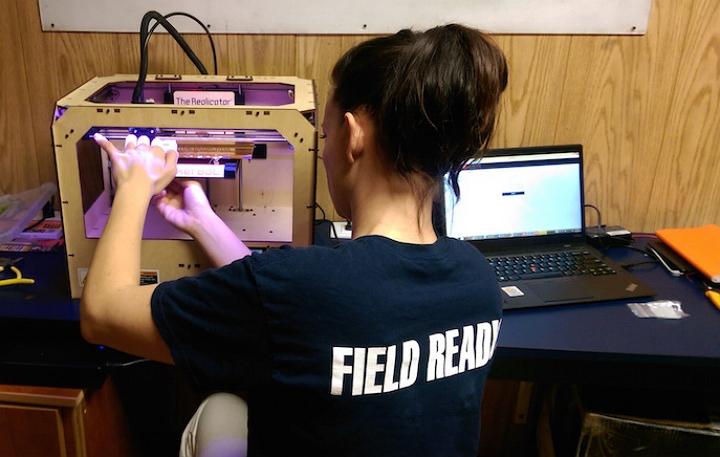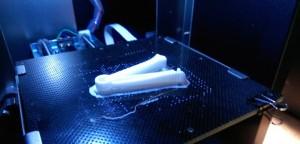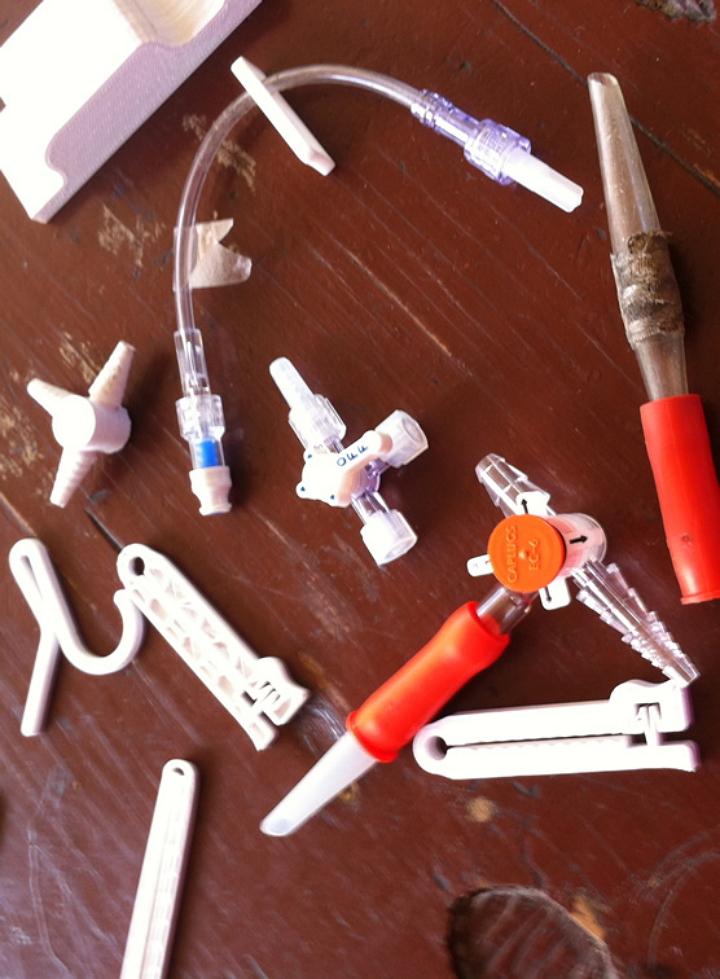 Dara Dotz is a pioneer in 3D printing in troubled and sparse environments. She’s the founder of iLab Haiti, a project which brought 3D printers as part of an aid package to that country following the catastrophic earthquake that devastated that nation in 2010.
Dara Dotz is a pioneer in 3D printing in troubled and sparse environments. She’s the founder of iLab Haiti, a project which brought 3D printers as part of an aid package to that country following the catastrophic earthquake that devastated that nation in 2010.
A magnitude 7.0 earthquake struck beneath Port-au-Prince, and aid groups did their best to battle the massive logistical and medical emergency challenges they faced, as the Red Cross estimated that up to 50,000 deaths had occurred, and many more individuals were grievously injured.
Dotz works with Made In Space, a company which has made headlines for building a variety of projects involving 3D printing objects in space, in conjunction with NASA and the International Space Station. She and Eric James, the Director of FieldReady.org, are intent on changing the outcome of communities faced with the problems of recovery from the aftermath of a natural disaster or war. They say that 3D printing promises to revolutionize the way humanitarian-aid supply chains function.
James has nearly two decades of experience in leading disaster relief and development projects, and he’s the author of Managing Humanitarian Relief: An Operational Guide for NGOs.
Field Ready says that the supply chain for disaster relief projects includes agents, middlemen, functionaries, and bureaucrats who insert themselves into the process of delivering goods and services to affected areas, and that those interactions lead to heavy lead times, and require good information systems and well-trained staff. But they add that all those efforts need to be precisely focused on the needs of disaster affected people.
“To date, the focus has been on stockpiling, distribution of cash and improving basic efficiencies, but there has been little done to transform the situation,” James says. “And so it calls for disruption. Instead of relying solely on the supply chain—what if we could make much of what was needed onsite–or at least nearby? If we can do it in space, we can do it here too.”
James says Field Ready combines 3D printing with low-tech innovation such as “hyper-local” manufacturing to provide aid workers and those affected by disasters with tools to help them overcome the weaknesses of the current system.
 Using 3D printers like the UP Mini and MakerBot Replicator, the team collaborates with health practitioners to design solutions such as medical disposables. They printed a prototype prosthetic hand which uses just five parts, as well as a butterfly-needle holder, a prototype screwdriver, prototype pipe clamps, and bottles. James says that while needed items like those would take weeks–and perhaps even months–to make their way to a disaster area, a few 3D printers and spools of filament can make those items available immediately.
Using 3D printers like the UP Mini and MakerBot Replicator, the team collaborates with health practitioners to design solutions such as medical disposables. They printed a prototype prosthetic hand which uses just five parts, as well as a butterfly-needle holder, a prototype screwdriver, prototype pipe clamps, and bottles. James says that while needed items like those would take weeks–and perhaps even months–to make their way to a disaster area, a few 3D printers and spools of filament can make those items available immediately.
Throughout its history, Haiti has suffered developmental and humanitarian challenges, and the earthquake of 2010 brought conditions there to a tipping point. James says nearly every sector of the country is stressed, and that pioneering aspects of in-situ manufacturing means Field Ready is deploying a team of specialists to Port-au-Prince to take on challenges in select health facilities. A grant provided by the Humanitarian Innovation Fund means Field Ready are poised to work with Haiti Communitere, Ti Kay Haiti, and MamaBaby Haiti to make medical disposables and pilot the use of recycling plastic filament.
According to James, others groups like Oxfam and partners Griffith University and My Mini Factory have similar initiatives underway in Kenya, and the Innovation & Planning Agency (IPA) in Jordan does as well. Yet another group, eNable, has been working to print prosthetic limbs using an all-volunteer-based approach.
“Humanitarian relief is still messy, tough and perplexing,” James says. “Aid is provided in the most difficult places on earth, and relief situations are the outcomes of catastrophic failure–usually, a collapse of cooperation and good governance.”
Field Ready says they hope to alleviate the problems by providing more direct, immediate technological intervention.
In 2013 alone, 334 “country-level natural disasters” affected the world, occurring across 109 countries.
Do you know of any other ways 3D printing technology is disrupting the status quo and solving problems around the world? Let us know in the 3D Printing Disaster Relief forum thread on 3DPB.com. Check out videos and more photos from Field Ready below.
Subscribe to Our Email Newsletter
Stay up-to-date on all the latest news from the 3D printing industry and receive information and offers from third party vendors.
You May Also Like
3D Printing Unpeeled: Biofuel Waste to Filament & Sustainable Photopolymers
I can’t ever remember a day with so many potentially high impact news stories have come out. In one story, we all know that there are problems with the safety...
Finnair Hires AM Craft to 3D Print Plastic Parts for Aircraft Interiors
Riga-based AM Craft, a supplier specialized in 3D printing aviation components and certified under EASA Part 21G, announced a significant achievement today. The company will assist in upgrading Finnair’s A320...
3DPOD Episode 198: High Speed Sintering with Neil Hopkinson, VP of AM at Stratasys
Neil Hopkinson, a pioneering 3D printing researcher, played a pivotal role in developing a body of research that is widely utilized today. He also invented High Speed Sintering (HSS), also...
3D Printing Webinar and Event Roundup: May 12, 2024
Webinars and events are picking up in the AM industry this week! ASTM International continues its Professional Certificate Course and Stratasys continues its advanced in-person trainings, while 3D Systems is...


































